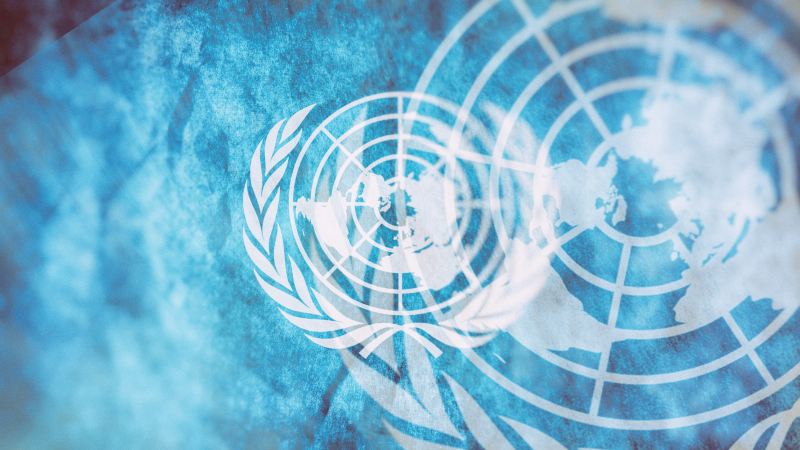

On September 6, 2000, the leaders of 189 countries from around the world met in a historic gathering in New York. The goal of the Millennium Summit was to crystallize the role of the United Nations in the next generation, establishing eight Millennium Development Goals aimed at eradicating poverty and hunger; reducing disease and child mortality; and boosting education, health, gender equality, and environmental sustainability. Now, 15 years later, the deadline for those goals has passed. Here’s mankind’s scorecard.

1. Eradicate extreme poverty and hunger
In 1990, half of the population in developing countries lived on less than $1.25 a day. That figure is now just 14 percent, with the number of people living in extreme poverty declining by half from 1.9 billion to 836 million. Meanwhile, the proportion of undernourished people in developing countries has almost halved, from 23.3 percent in 1990 to 12.9 percent in 2015.

2. Achieve universal primary education
In developing countries, the primary school enrollment rate has risen from 83 percent in 2000 to 91 percent in 2015–with just 57 million out-of-school kids of primary age, compared to 100 million in 2000. Alongside this, the literacy rate among youth aged 15 to 24 has jumped from 83 percent in 1990 to 91 percent in 2015, with the gap narrowing between women and men.

3. Promote gender equality and empower women
Far more girls are being educated today than 15 years ago. In Southern Asia, in particular, there are now 103 girls for every 100 boys in school, compared to just 74 in 2000. Meanwhile, women make up 41 percent of paid employment outside of agriculture today, compared to 35 percent in 1990. Additionally, the representation of women in Parliament has nearly doubled in the last 20 years, though it still remains low at 20 percent.

4. Reduce child mortality
The mortality rate for children under 5 years old fell from 90 to 43 deaths per 1,000 live births between 1990 and 2000. That means the number of mortalities fell from 12.7 million in 1990 to just above 6 million in 2015, despite population growth. One major contributor to this decrease is vaccination: Measles inoculation programs prevented nearly 15.6 million deaths between 2000 and 2013, with the number of reported cases dropping by 67 percent. The vaccination rate for measles is 84 percent today, compared to 73 percent in 2000.

5. Improve maternal health
The maternal mortality ratio has halved worldwide since 1990, with a huge drop of 64 percent in Southern Asia. Meanwhile, almost three quarters of births globally were conducted by midwives in 2014–up from 59 percent in 1990.

6. Combat HIV/AIDS, malaria, and other diseases
In addition to progress in fighting measles, several other disease outbreaks are in decline. Tuberculosis mortality rates have fallen by 45 percent since 1990, while the global malaria incidence rate has decreased by about 37 percent since 2000. Meanwhile, new HIV infections are down by approximately 40 percent since 2000, and an estimated 13.6 million people living with the disease are receiving antiretroviral therapy for it today, compared to just 800,000 in 2003.

7. Ensure environmental sustainability
More than 90 percent of the world’s population is now using an improved drinking water source, compared to around 75 percent in 1990. That’s a boost of 2.6 billion people, while a similar number–2.1 billion–have gained access to improved sanitation in that time. Much of that increase is because the proportion of urban population living in slums has dropped from 40 percent in 2000 to 30 percent in 2014. In addition, ozone-depleting substances, as defined in the Montreal Protocol, have been virtually eliminated since 1990–and the ozone layer is expected to recover by the middle of the century.

8. Develop a global partnership for development
Trade has become much smoother between the first and third worlds, with almost 80 percent of imports admitted duty free today, up from 65 percent in 2000. Internet penetration has soared from six percent of the world’s population to 43 percent over the same time frame. Aid funding has risen by 66 percent in real terms since 2000 to a record high of $135.2 billion in 2014, with five countries (Sweden, Denmark, Norway, Luxembourg, and the United Kingdom) exceeding the United Nations’ target of 0.7 percent of gross national income spent on overseas development aid.


How We Get To Next was a magazine that explored the future of science, technology, and culture from 2014 to 2019. This article is part of our Vital Signs section, on the future of human health. Click the logo to read more.
